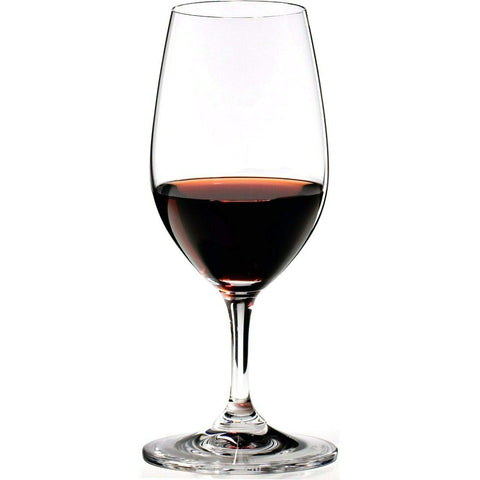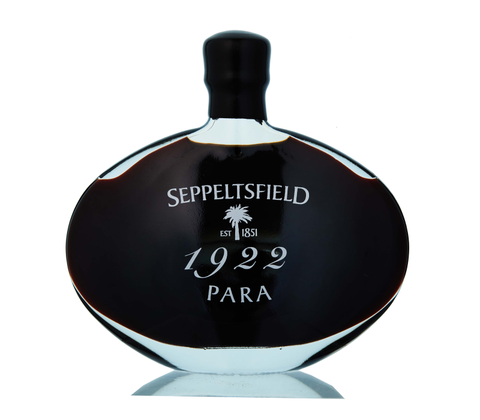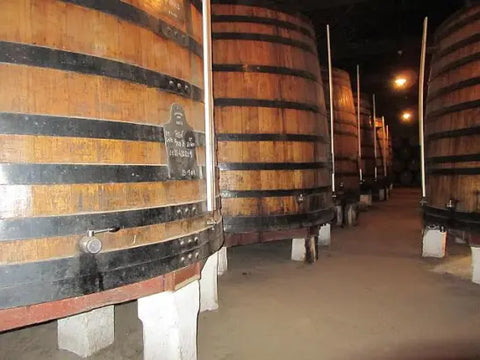Articles

Jun 26, 2025
What Are Fortified Wines?
Fortified wines are produced by adding neutral grape spirit (typically brandy) to wine during or after fermentation. This process serves multiple purposes: it stops fermentation when added early (preserving natural grape sweetness), increases alcohol content to 15-22%, and creates wines with exceptional aging potential.
The fortification process was originally developed as a preservation method for wines that needed to survive long sea voyages. Today, it's celebrated as an art form that produces some of the world's most age-worthy and food-friendly wines.

Jun 02, 2025
McLaren Vale's reputation today rests largely on its exceptional red wines—bold Shiraz, elegant Grenache, and structured Cabernet Sauvignon that have earned international acclaim. However, long before the region became synonymous with premium table wines, McLaren Vale was building its foundation on an entirely different style of wine: fortified wines. These rich, complex, and long-lived wines not only shaped the early character of McLaren Vale but also represent some of the region's most distinguished and historically significant expressions.

Feb 12, 2025
Australian tawny ports, now known simply as "tawny" due to EU regulations, represent some of the finest fortified wines in the world. These rich, complex wines showcase Australia's unique terroir and centuries-old winemaking expertise. Here are the top 10 Australian tawnies that demonstrate exceptional quality and character.

Feb 12, 2025
From the sun-drenched vineyards of Portugal's Douro Valley emerges one of the world's most cherished fortified wines: tawny port. This rich, amber-hued wine carries centuries of tradition, innovation, and cultural significance. Let's explore the fascinating history of tawny port, from its humble beginnings to its current status as a premium fortified wine.
All
100 year old vines
2025 wine investment
38 year old tawny port
40 year old tawny port
40 yr old tawny port
A first-timer’s guide
A guide to finding good sauvignon blanc
A guide to south australian riesling
A guide to sweet red wine varieties
A guide to the best australian white wine
About oak wine barrels
Affordable wine
Ai
Ai assisted wine making
Ai will replace winemakers
All about oak wine barrels
American oak white wine
American oak wine barrels
Art of selecting good sauvignon blanc
Australian merlot
Australian sauvignon blanc
Australian shiraz
Australian sparkling pinot noir
Avoiding wine snobs
Barossa reds
Barossa shiraz
Barossa valley vs. mclaren vale
Barossa valley wines
Bbq
Bbq wine
Benefits of wine antioxidants
Best australian shiraz wines
Best mclaren vale restaurants
Best mclaren vale shiraz
Best mclaren vale wine
Best red wine for beginners
Best shiraz under $20
Best wine deals
Best wine deals australia
Best winery restaurants nearby
Black friday
Blending mclaren vale wines
Bucket list
Bulk buy tawny port
Bunnings
Buy mclaren vale wine online
Buy wine
Buy wine online
Cabernet sauvignon
Cabernet sauvignon and steak
Cabernet sauvignon in mclaren vale
Cabernet sauvignon or merlot
Cabernet vs merlot
Calories in red wine
Cellaring cabernet sauvignon
Cellaring shiraz
Champagne
Chardonnay
Cheese & wine
Cheese & wine pairing
Choosing mclaren vale shiraz to age
Choosing mclaren vale shiraz to store
Choosing wine for a date
Choosing wine for meeting parents
Christmas cut off dates
Clones
Comparing chardonnay from barossa valley to chardonnay from mclaren vale
Comparing mclaren vale chardonnay to napa valley chardonnay
Comprehensive guide to shiraz
Coonawarra
Cork
Cork vs screwcap for wine
Creates australia's most complex reds
Curtis family tawny port
Dating with wine
Decent red wine
Dinner parties
Do millennials even care about wine
Dry pinot grigio sa
Dry white wine
Durbidge & co grenache 2018
Easy drinking red wines
Enduring legacy of the wine barrel
Eparcel
Exploring the diverse types of wine
Exploring the health benefits of red wine
Fiano
Food
Food and wine pairing
Fortified wines australia
French oak wine barrels
Gen z
Gift ideas
Give wine as a gift
Good sauv blanc guide
Grape
Great red wines
Greco
Grenache
Grenache wine blend
Guide to pinot grigio
Guide to sa wines
Guide to sweet wines
Health benefits of drinking wine
Health benefits of red wine
History of shiraz wine
How does american oak affect the taste of white wine?
How long does a bottle last
How long does an open bottle of wine last?
How many glasses in a wine bottle
How many glasses in bottle of champagne
How many wineries are in mclaren vale?
How mclaren vale's climate shapes the taste of its wines
How old are the vines in mclaren vale?
How red wine is made
How to cellar wine
How to survive a wine tasting
Introduction to tawny port
Is mclaren vale better than barossa?
Is mclaren vale wine organic or biodynamic?
Legion merlot
Legion shiraz
Light damaged wine
Low calorie wine
Luxury accomadation
Margaret river
Mcclaren vale chardonnay
Mcdonald's
Mclaren vale
Mclaren vale cab sav
Mclaren vale cabernet sauvignon
Mclaren vale cellar doors
Mclaren vale cellar's grenache
Mclaren vale cellars
Mclaren vale cellars chardonnay
Mclaren vale cellars grenache
Mclaren vale cellars merlot
Mclaren vale cellars old vines
Mclaren vale cellars rose
Mclaren vale cellars sauvignon blanc
Mclaren vale cellars shiraz
Mclaren vale cellars sparkling pinot noir
Mclaren vale champagne
Mclaren vale chardonnay
Mclaren vale fortified wine
Mclaren vale grenache
Mclaren vale grenache food parings
Mclaren vale merlot
Mclaren vale merlot vs mclaren vale shiraz
Mclaren vale pinot grigio
Mclaren vale red
Mclaren vale red wine
Mclaren vale reds
Mclaren vale regions map
Mclaren vale restaurants
Mclaren vale riesling
Mclaren vale rose
Mclaren vale rose'
Mclaren vale sauvignon blanc
Mclaren vale shiraz
Mclaren vale shiraz for future cellars
Mclaren vale tawny port
Mclaren vale terrior
Mclaren vale terroir
Mclaren vale trouble maker shiraz
Mclaren vale vs margaret river cabernet sauvignon
Mclaren vale vs napa valley
Mclaren vale white
Mclaren vale white wine
Mclaren vale white wines
Mclaren vale wine tasting by the season
Mclaren vale winemakers
Mclaren vale wineries
Mclaren vale wineries: the ultimate guide for wine lovers
Mclaren vale wines
Mclaren vale: a wine lover's guide
Meet the parents
Merlot
Merlot or shiraz
Merlot vs shiraz
Millennials
Montepulciano
Nut house merlot
Oaked vs non-oaked chardonnay
Old vine
Old wine grenache
Old wine shiraz
Online wine shopping
Ordering wine like a professional
Pairing
Pairing fresh seafood with south australian white wines
Pairing mclaren vale chardonnay with suggested foods
Pairing mclaren vale merlot with suggested foods
Pairing mclaren vale rosé with suggested foods
Pairing mclaren vale sauvignon blanc with suggested foods
Pairing seafood with mclaren vale white wines
Pairing seafood with white wine
Pairing soft cheeses with white wines
Perfect drop
Perfect wine gift
Pinot noir
Port
Protecting your wine from light damage
Pub
Reading australian wine labels
Recipes for chardonnay
Recipes with merlot
Red wine explained
Red wine gifts
Red wine health benefits
Red wine heart benefits
Red wine online
Red wine styles
Red wine types
Red wine varieties
Red wines
Restaurant wine ordering tips
Rewards
Sa cab sav
Sa chardonnay
Sa grenache
Sa merlot
Sa pinot grigio
Sa sav blanc
Sa shiraz
Sa tawny port
Sausage sizzle wines
Sauvignon blanc
Screwcap
Shiraz
Shiraz and steak
Shiraz wine blend
Single vineyard shiraz
Small batch shiraz sa
Soil
Sommelier
South australian cabernet sauvignon
South australian chardonnay
South australian riesling
South australian shiraz
South australian wine regions
Sparkling pinot noir
Sparkling pinot noir rose
Sparkling rose
Sparkling wines
Steak & wine
Steak & wine pairing
Summer wines
Tawny
Tawny port
Tempranillo
Terroir
The best mclaren vale shiraz wines for 2025
The ultimate guide to big bold red wines
The ultimate guide to big bold red wines for steak lovers
Tips for storing red wine
Tips from wine connoisseur
Top 10 bang for your buck wine deals
Top 10 must-try wine varieties from mclaren vale in 2024
Top 10 secret wine deals
Top 10 shiraz
Top 10 wine retailers 2025
Top 10 wine retailers australia
Top 25 mclaren vale shiraz
Top wine deals mclaren vale wineries
Touriga nacional
Trouble maker shiraz
Truth about red wine health benefits
Ultimate guide to mclaren vale wineries
Variety
Vermentino
Visiting mclaren vale sa
Vivino
What is mclaren vale famous for?
What is mclaren vale known for?
What is the best time to visit mclaren vale wineries?
What wine is mclaren vale famous for?
What winemakers don't tell you about making wine
Which grape varieties grow in mclaren vale?
White wine gift
White wine varieties
White wines
White wines & soft cheeses
Wine
Wine & chocolate pairing
Wine & dark chocolate
Wine & pasta
Wine & pasta pairing
Wine and chocolate
Wine and milk chocolate
Wine and white chocolate
Wine at office parties
Wine birthday gift
Wine body
Wine club
Wine corporate gift
Wine dating
Wine deals
Wine delivery
Wine etiquette at work
Wine faults
Wine gift
Wine gift set
Wine gifts
Wine guide
Wine housewarming gift
Wine in mclaren vale
Wine industry secrets revealed
Wine list
Wine map
Wine pairing
Wine snob
Wine storage tips
Wine tasting
Wine tastings
Wine wedding gift
Wine wheel
Wine with snags
Winemaking
Wines
🍷 1000 fun facts about wine
Sign up for our newsletter
Get the latest news and promotion information. Don't miss any of our deals

